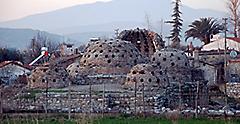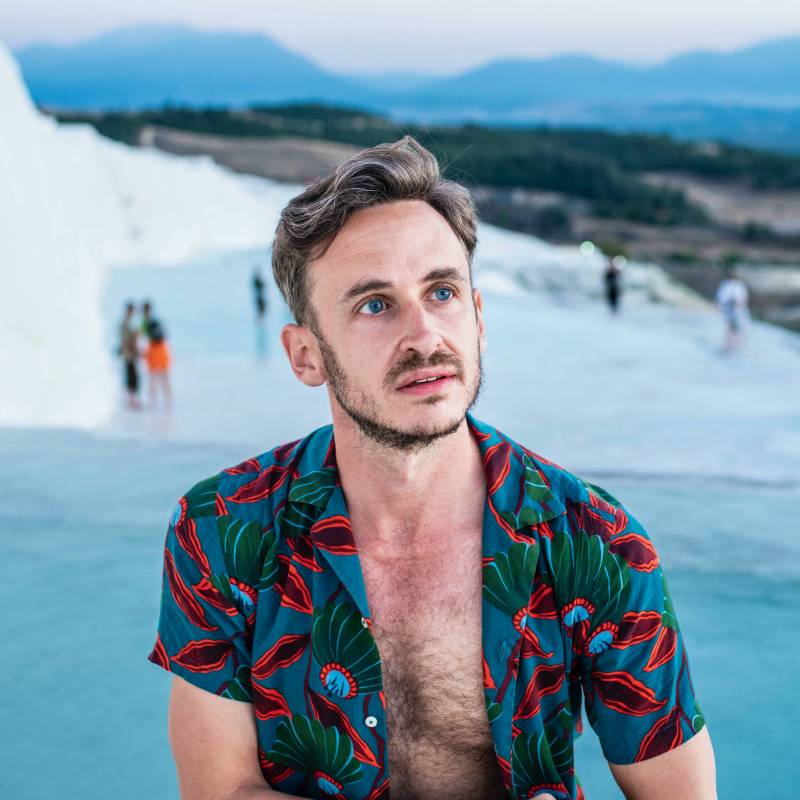Vacation With Turkish Baths And Hammam Spas: Cleanse And Relax
By Robert Schrader | Published on April 12, 2022
Although the concept of Turkish baths (or hammam) is relatively ubiquitous in travel guides, it might not rank high on your list of priorities when planning a vacation to Turkey. This is understandable since Western travelers are typically uncomfortable with the idea of communal bathing. Plus, with so many other attractions on offer in Turkey, it's hard to hit everything on one trip. But, participating in the tradition of hammam unlocks an aspect of Turkish culture that's difficult to access any other way.

Live Hammam History In Sultanahmet

Whether or not you actually enter into a hammam spa, there are plenty of opportunities to learn about this cultural practice, right in the heart of Istanbul's historical Sultanahmet district. Walking around the fountain in the courtyard of iconic Ayasofia — a mosque that was once a church and then before that, another mosque — you'll notice Hurrem Sultan Hammam, a 500-year-old bathhouse that many incorrectly assume is part of the Ayasofia historical complex.
The experience here is second-to-none, as long as you're willing to foot the high bill (treatments here can cost about $150 per hour). My hammam experience here was made all the more special by the staff who made the bath as cerebral as they did sensory.
"The practice of hammam dates back to about the seventh century," my masseur explained as if he was a museum tour guide. He went on, "Many cultures besides ours claim it as their own. Before it even made its way to the Middle East, public bathing was popular in ancient Greece and Rome. The theory is that hammam, as we now call it, arrived in present-day Greece and Turkey during the Byzantine era, before greatly popularizing in the mid-15th century, after the Ottomans had taken over Istanbul."
Unlike the public baths found in Arabic countries, Turkish baths weren't necessarily built next to mosques with the intent to purify worshipers before entering the sacred space. The baths served as much of a social purpose as they did a sanitary one and were a public gathering place for people at all levels of society.


Relax Like Royalty
These days, at least in tourist-oriented baths such as Hurrem Sultan Hammam, the communal aspect is all but missing. In fact, when the masseur led me into the bathing chamber — whose towering marble interior seems much larger than should've been possible based on its rather humble exterior — only two other people (a colleague of mine who'd joined me on my trip, and his masseur) were in there.
"Historically," he explained, as he handed both of us pairs of bathing underwear and waved us toward the location of the changing room, "you'd have large groups of men talking business or women catching each other up about goings-on within the community inside a hammam as large as this. Women actually made much more frequent use of the hammam since in Ottoman times there were fewer places for them to socialize — on the rare occasion they weren't busy with duties at home."
After we changed into our skivvies (nude bathing, while once common, isn't the norm today), our masseurs directed us to the "göbektaşı," a high marble platform in the middle of the tranquil hammam spa. "This is where the magic happens," my masseur smiled and instructed me to lay face down, before dumping a tub of soapy hot water onto my back and beginning what I can only describe as an intense massage. I don't remember a lot about the 60-minute treatment, other than that my mind sort of shut off as my body when through a whole array of sensations.
I do remember feeling, probably because of the exclusive nature of this particular spa, that the experience was rather regal, even though hammam is something common people have enjoyed for centuries. Once my massage was finished, my masseur advised caution in getting down from the platform, which is as high as it is for practical reasons: to allow the sudsy, soiled water to flow off the platform so that it doesn't soak your feet — that would defeat the whole purpose of the hammam. After that, there are various rooms you can spend time in, going from a warm room to a very hot room and then cooling down in a colder space. The baths boast many health benefits, too, like easing aches and pains, increasing circulation, and lowering stress and anxiety.
Complete Your Turkish Bathhouse Experience With Turkish Delights

One advantage of going to a higher-end hammam like Hurrem Sultan Hammam or ones found in hotels is that since the experience is more private by design, you can enjoy a couple's hammam. This is usually not possible in the more traditional hammams because the genders are separated. On the other hand, I do think the simpler hammams provide a more authentic experience. If that sounds like it's more your speed, head to the 18th-century Cagaloglu Hammam, which is also located in the heart of Sultanahmet.
In this Turkish bathhouse, you can enjoy more of the communal aspect of Turkish bathing. However, many of the people inside won't speak any English. Still, even if you can't have a conversation, being able to observe local people as they go about this age-old practice will allow you to "see how it's done," so to speak, and provide more accurate historical context than a higher-end establishment would.
"Even for us," a local bather who happened to speak English told me candidly, "this is still kind of a novelty, at least in relatively upscale parts of Istanbul like Sultanahmet. We all have bathrooms in our houses today, so we don't need to come here, many of us just like to."
Although you can find local hammam in Istanbul neighborhoods from luxurious Beyoglu to the more modest Üsküdar, one advantage of bathing in touristy Sultanahmet is that you're surrounded by so many things to do. In addition to tourist attractions like the Blue Mosque and Grand Bazaar, you can duck into a cafe after your bath to enjoy thick, Turkish coffee, delicate Turkish tea, or Turkish sweets like crispy, doughy baklava and chewy, delectable Turkish delight.


Discover A Whole World Of Hammam
If you venture away from Istanbul, you can find hammams all over Turkey. This includes the larger cities like Ankara and Izmir, as well as the smaller ones like conservative Konya in central Turkey and Antalya — a coastal hub popular with wealthy Turkish people as well as travelers.
You can also find hammam in more traditionally touristic places, such as the hot-air balloon haven Cappadocia. Likewise, in Oludeniz (famous for its gorgeous Blue Lagoon beach), your best bet for a spa experience is inside the luxury hotels there. Unless you head inland to Fethiye, a large city with fewer tourists and more locals, the hammam experience can be difficult to combine with your beach vacation.
If you're more interested in learning about the hammam than experiencing it for yourself, a couple of museums do exist throughout Turkey. One is located in the Beypazari district of Turkey's capital Ankara. Another is in Sahinbey, in Gaziantep near the Syrian Border, in far southern Turkey. Although you can't experience a hammam at either of these places, the exhibits include centuries-old hammam equipment, which sheds light on a more accurate historical impression of the experience.
Another way to appreciate the beauty of hammam is to marvel at the building's architecture from the outside. Personally, I'm most fascinated by the domed roofs, which have holes in them to let the steam escape. I also love the incorporation of star shapes throughout the architecture. From the footprint of rooms within the hammam to designs on the walls and floors, stars are all around.






